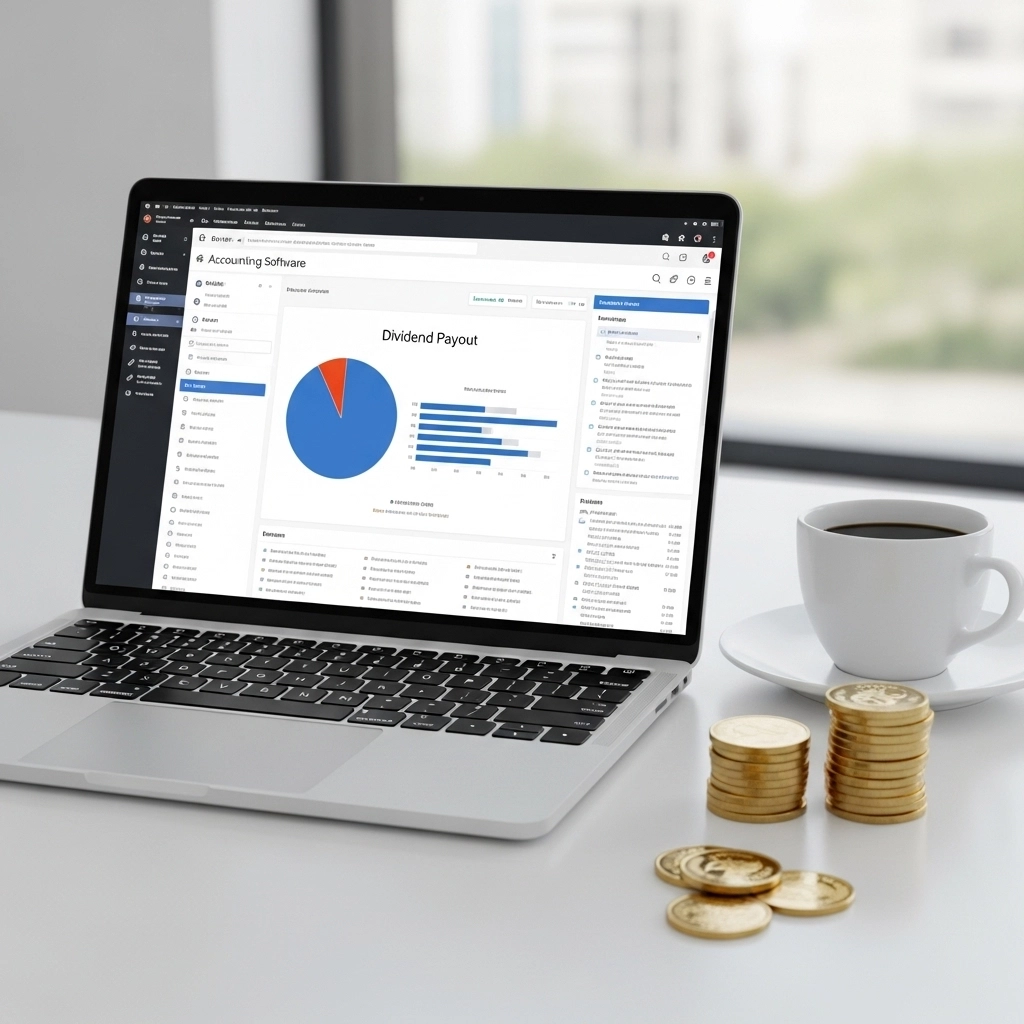How to Record a Dividend Payout in Australia (Double-Entry Accounting Guide)

Recording a dividend payout in double-entry accounting software for an Australian company involves specific legal and financial steps, especially when dealing with franking credits. Getting it right is crucial for compliance with ASIC and the ATO.
This guide provides a comprehensive breakdown, from the initial legal requirements to the final accounting entries in your software.
This is a guide for bookkeeping purposes. Dividend strategy, franking calculations, and corporate law compliance can be complex. It is highly recommended that you consult with your accountant or tax advisor to ensure everything is handled correctly for your specific situation.
1. Before You Touch Your Accounting Software (Crucial Legal & Financial Steps)
Before you can record anything, your company must legally declare the dividend. Skipping these steps can have serious consequences.
- Check Solvency: The directors must ensure the company will still be solvent (able to pay its debts as they fall due) after the dividend is paid.
- Hold a Directors’ Meeting: The directors must meet and pass a resolution to declare the dividend. This resolution should specify the total dividend amount, the payment date, and whether it’s franked, partly franked, or unfranked.
- Minute the Resolution: This decision must be formally recorded in the company’s minute book.
- Prepare a Dividend Statement: You must provide a dividend statement to each shareholder showing the cash amount, the franking credit (if any), and the total “grossed-up” dividend.
2. Setting Up Your Chart of Accounts
First, ensure you have the correct accounts in your software (like Xero, MYOB, QuickBooks Online or Gimbla Accounting Software). If they don’t exist, create them.
| Account Name | Account Type | Description |
|---|---|---|
| Dividends Paid | Equity | This contra-equity account tracks dividends paid during the year, reducing your Retained Earnings. |
| Dividends Payable | Current Liability | A temporary holding account representing the company’s legal obligation to pay the declared dividend. |
| Franking Account | Equity | This account tracks the balance of your company’s imputation credits (company tax paid). |
3. The Accounting Entries (The Double-Entry Process)
There are two key moments to record: declaring the dividend and paying the dividend.
Scenario A: Simple Unfranked Dividend
Let’s assume your company declares a $20,000 unfranked dividend.
Step 1: Record the Declaration of the Dividend (Journal Entry)
This entry is made on the date the directors declare the dividend. It recognises the reduction in equity and creates a liability.
- Debit: Dividends Paid (Equity) - $20,000
- Credit: Dividends Payable (Current Liability) - $20,000
Your journal entry:
| Account | Debit | Credit |
|---|---|---|
| Dividends Paid | $20,000 | |
| Dividends Payable | $20,000 | |
| To record dividend declared |
Step 2: Record the Payment of the Dividend
This entry is made on the date you pay the cash to shareholders.
- Debit: Dividends Payable (Current Liability) - $20,000
- Credit: Bank Account (Asset) - $20,000
This is usually done by creating a “Make Payment” transaction from the bank account and coding it to the Dividends Payable account.
Scenario B: Fully Franked Dividend (The Australian Way)
This is more common for profitable Australian companies. Let’s assume a $7,000 cash dividend, which is fully franked.
First, calculate the franking credit. Assuming a 30% tax rate: Franking Credit = ($7,000 / (1 - 0.30)) - $7,000 = $3,000
- Cash Dividend: $7,000
- Franking Credit: $3,000
- Total (Gross) Dividend: $10,000
Step 1: Record the Declaration of the Franked Dividend (Journal Entry)
The total value leaving equity is the cash plus the franking credit.
- Debit: Dividends Paid (Equity) - $10,000
- Credit: Franking Account (Equity) - $3,000
- Credit: Dividends Payable (Current Liability) - $7,000
Your journal entry:
| Account | Debit | Credit |
|---|---|---|
| Dividends Paid | $10,000 | |
| Franking Account | $3,000 | |
| Dividends Payable | $7,000 | |
| To record fully franked dividend |
Step 2: Record the Payment of the Dividend
This entry records the cash movement.
- Debit: Dividends Payable (Current Liability) - $7,000
- Credit: Bank Account (Asset) - $7,000
4. Special Case: Dividend Paid to a Director’s Loan Account
If a shareholder is also a director with a loan account, you can pay the dividend by crediting their loan account instead of paying cash. In this case, the payment entry (Step 2) changes. Instead of crediting the Bank Account, you would:
- Credit: Director’s Loan Account (Liability)
5. Summary and Final Checklist
- ✅ Legal First: Complete the director’s resolution and solvency declaration.
- ✅ Chart of Accounts: Ensure Dividends Paid, Dividends Payable, and Franking Account are set up.
- ✅ Declare (Journal Entry): Debit Dividends Paid, Credit Franking Account (if applicable), and Credit Dividends Payable.
- ✅ Pay (Bank Transaction): Code the cash payment to Dividends Payable to clear the liability.
- ✅ Reporting: Issue Dividend Statements to shareholders and report details to the ATO.
Gimbla Contributor | July 6th, 2025